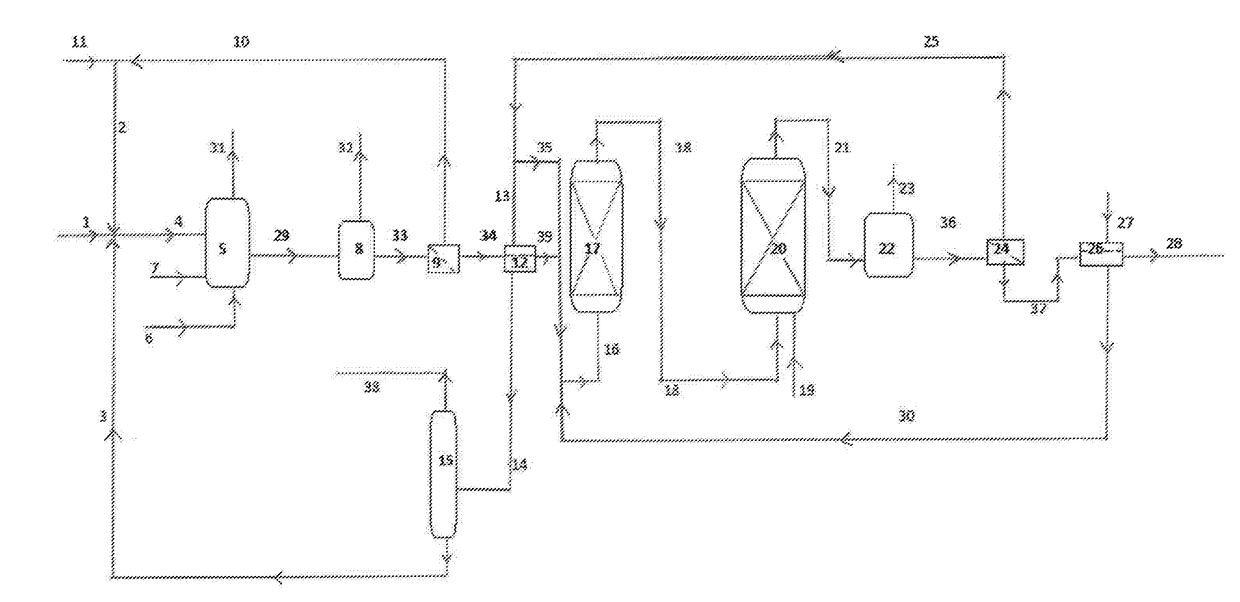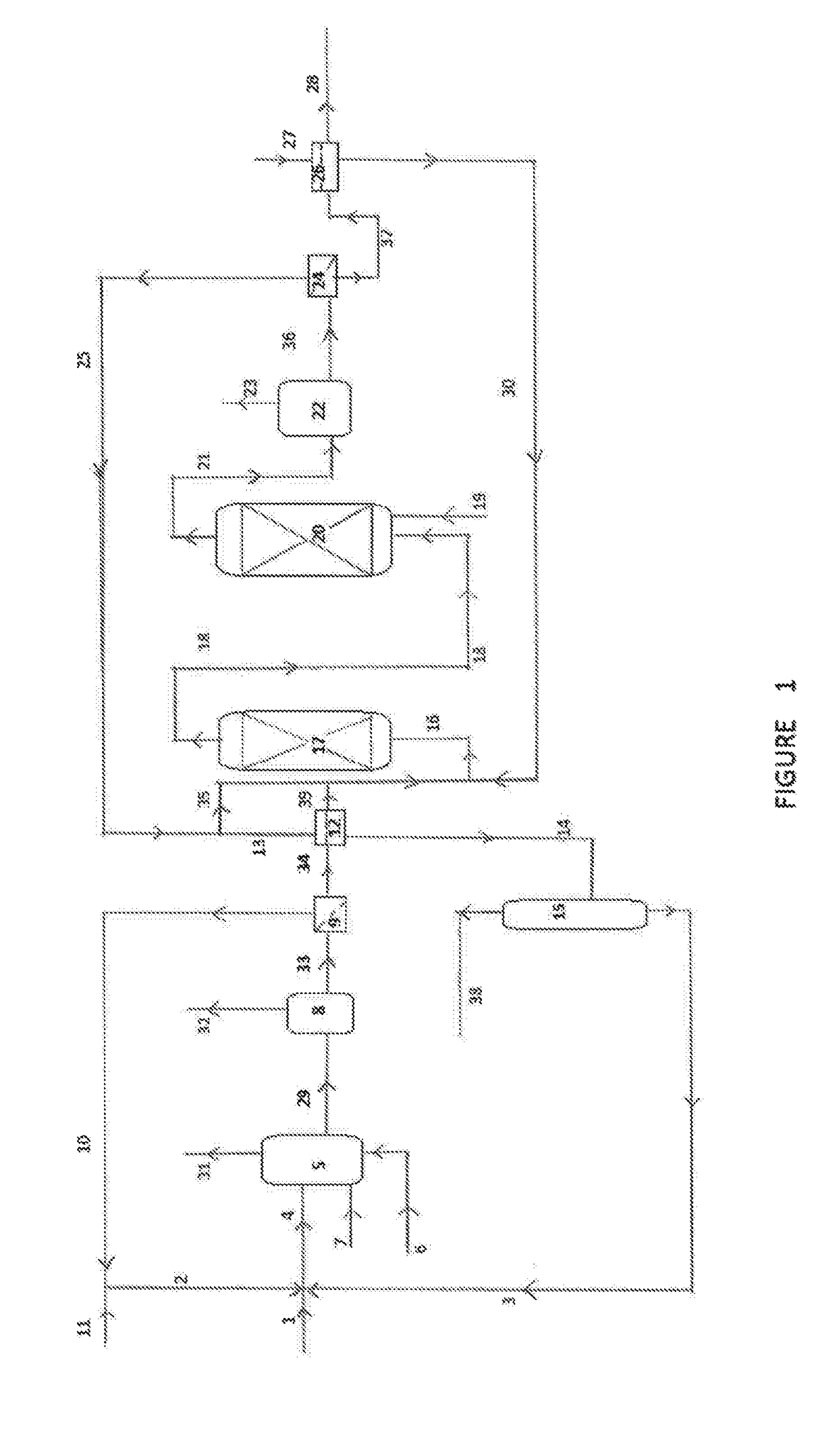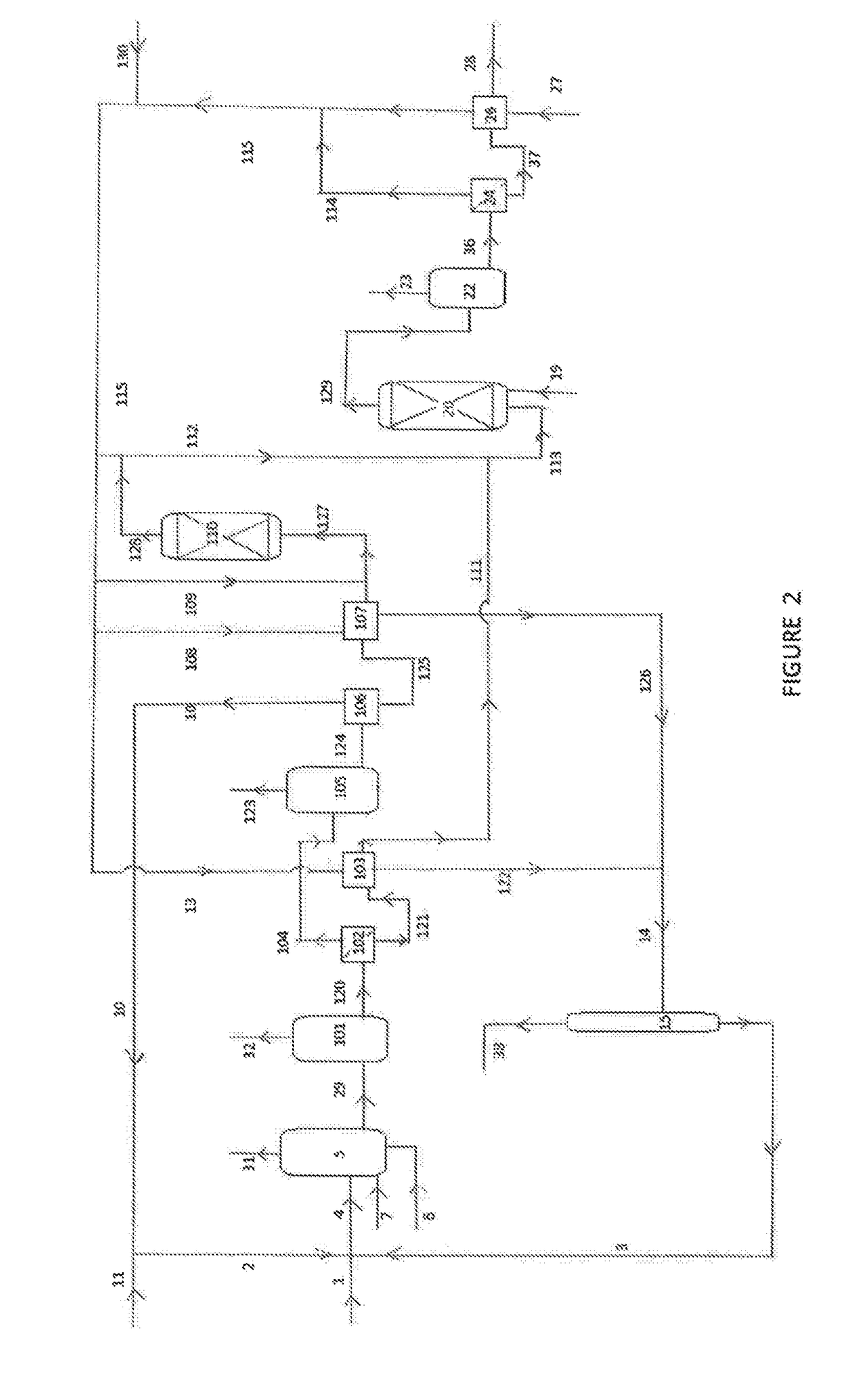Process for the preparation of a purified acid composition
a technology of purified acid and composition, which is applied in the field of purified acid composition preparation, can solve the problems of undesirable presence of fdca in the composition, significant deterioration, and difficulty in removing ffca
- Summary
- Abstract
- Description
- Claims
- Application Information
AI Technical Summary
Benefits of technology
Problems solved by technology
Method used
Image
Examples
example 1
[0081]In order to show the influence of the reaction temperature on the conversion of the FFCA to HMFA and MFA Catalysts 1 and 2 were used in experiments wherein the above feedstock was passed over beds of the two catalysts with different space velocities and at different reaction temperatures. From the reactor effluent the amounts of FFCA, HMFA and MFA were determined. The results are shown in Table 1. The amounts of FFCA, HMFA and MFA are expressed as mass %, based on the amount of FFCA in the feedstock.
TABLE 1Exp.Contact time,Temp.,FFCA,HMFA,MFA,No.Catalystmin° C.mass %mass %mass %110.1516007217220.151604856313.01600010423.01600020510.1217007518620.1517010707713.0170009823.01700510910.12180062201013.01800081123.01800051210.121901558121310.23190050251411.019000151521.0190005
example 2
[0082]To show the catalytic effect of the hydrogenation catalyst on the hydrolysis reaction Catalysts 1 and 2 were tested at different hydrogenation conditions as to space velocity and temperature. In addition, blank experiments were conducted at the same conditions, but in the presence of inert ceramic particles instead of catalyst particles. The feedstock was similar to that described in Example 1. The amount of FDCA-ME was measured for the each of the effluents, and expressed as weight percent of the total liquid effluent. The results are shown in Table 2.
TABLE 2Exper-imentWHSV,ContactTempera-FDCA-ME,No.Catalysthr−1time, minture, ° C.% wt16Blank——1600.751712670.221600.601822670.221600.6519Blank—1600.752011600.371600.602121600.371600.6022Blank——1600.75231 401.5 1600.40242 401.5 1600.1825Blank——1600.75261 203.0 1600.25272 203.0 1600.028Blank——1901.102912670.221900.903022670.221900.9031Blank——1901.103211600.371900.803321600.371900.8234Blank——1901.10351 401.5 1900.30362 401.5 1900.17...
example 3
[0083]To show the difficulties of separating FDCA from the hydrogenation products of FFCA the following experiments were conducted.
[0084]Pure FDCA was mixed with a pure contaminant in an amount of up to 2% wt, based on the amount of FDCA. The mixture was dissolved in water to a concentration of about 4% wt of FDCA by heating. FDCA was crystallized by cooling the solution under controlled cooling rates. The FDCA crystals were filtered at 80, 50 and 20° C. and the levels of each contaminant in the wet crystals were determined. The results are shown in Table 3 below. The levels are shown as percentages of the amounts of the contaminants that were added to the pure FDCA.
[0085]The results show that many compounds that may be produced in the hydrogenation of FFCA are difficult to separate from FDCA. The best separation can be obtained with HMFA.
TABLE 3Contaminant% @ 20° C.% @ 50° C.% @ 80° C.5-hydroxymethyl furan-2-844carboxylic acid (HMFA)furan-2-carboxylic acid454544(FCA)5-methyl-furan-...
PUM
| Property | Measurement | Unit |
|---|---|---|
| pressure | aaaaa | aaaaa |
| temperature | aaaaa | aaaaa |
| pressure | aaaaa | aaaaa |
Abstract
Description
Claims
Application Information
 Login to View More
Login to View More - R&D
- Intellectual Property
- Life Sciences
- Materials
- Tech Scout
- Unparalleled Data Quality
- Higher Quality Content
- 60% Fewer Hallucinations
Browse by: Latest US Patents, China's latest patents, Technical Efficacy Thesaurus, Application Domain, Technology Topic, Popular Technical Reports.
© 2025 PatSnap. All rights reserved.Legal|Privacy policy|Modern Slavery Act Transparency Statement|Sitemap|About US| Contact US: help@patsnap.com



